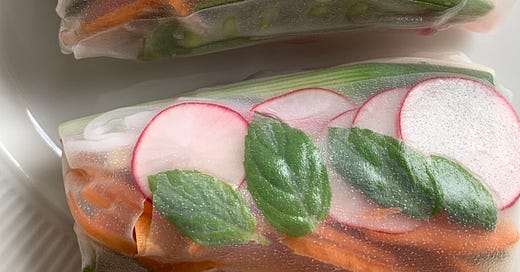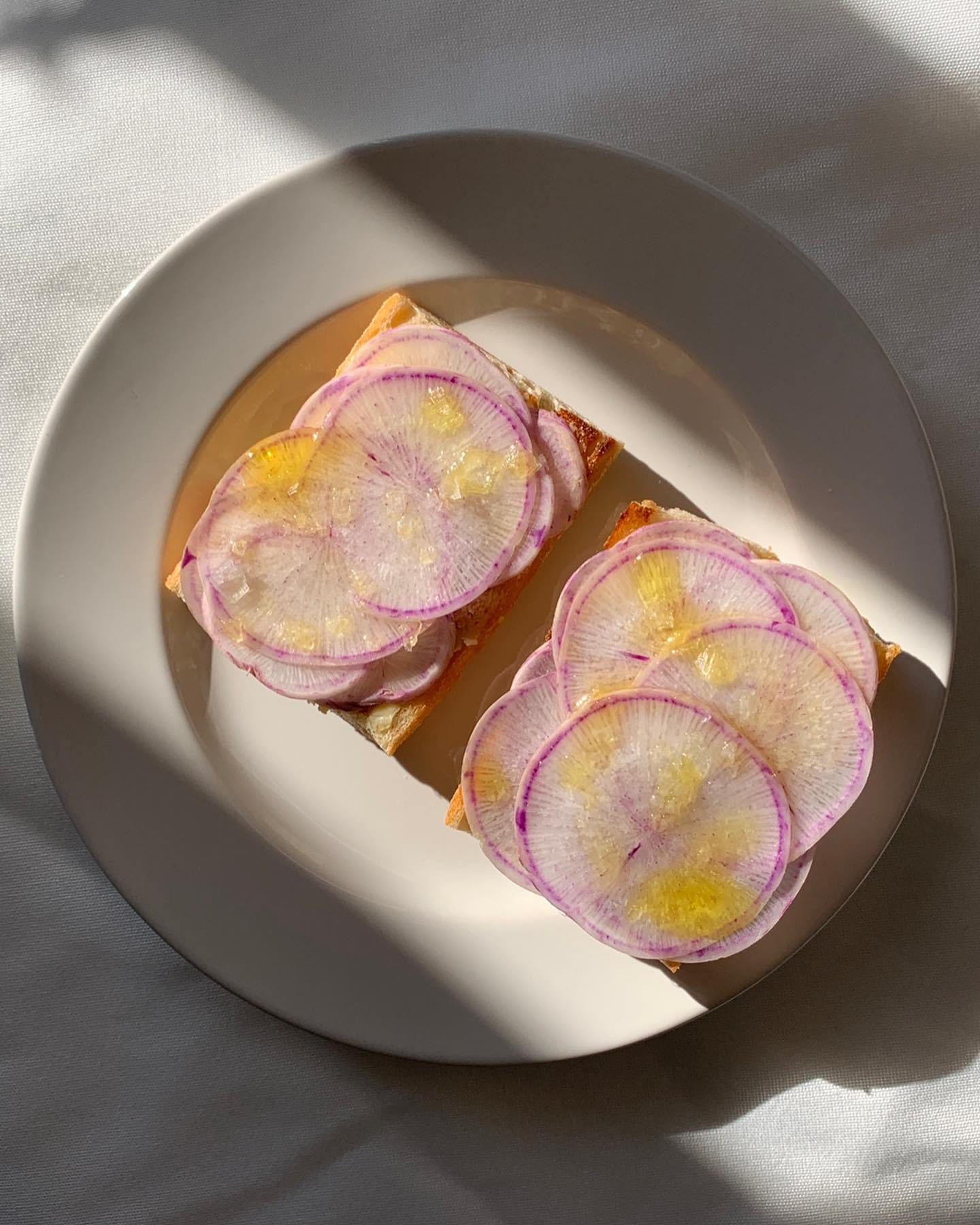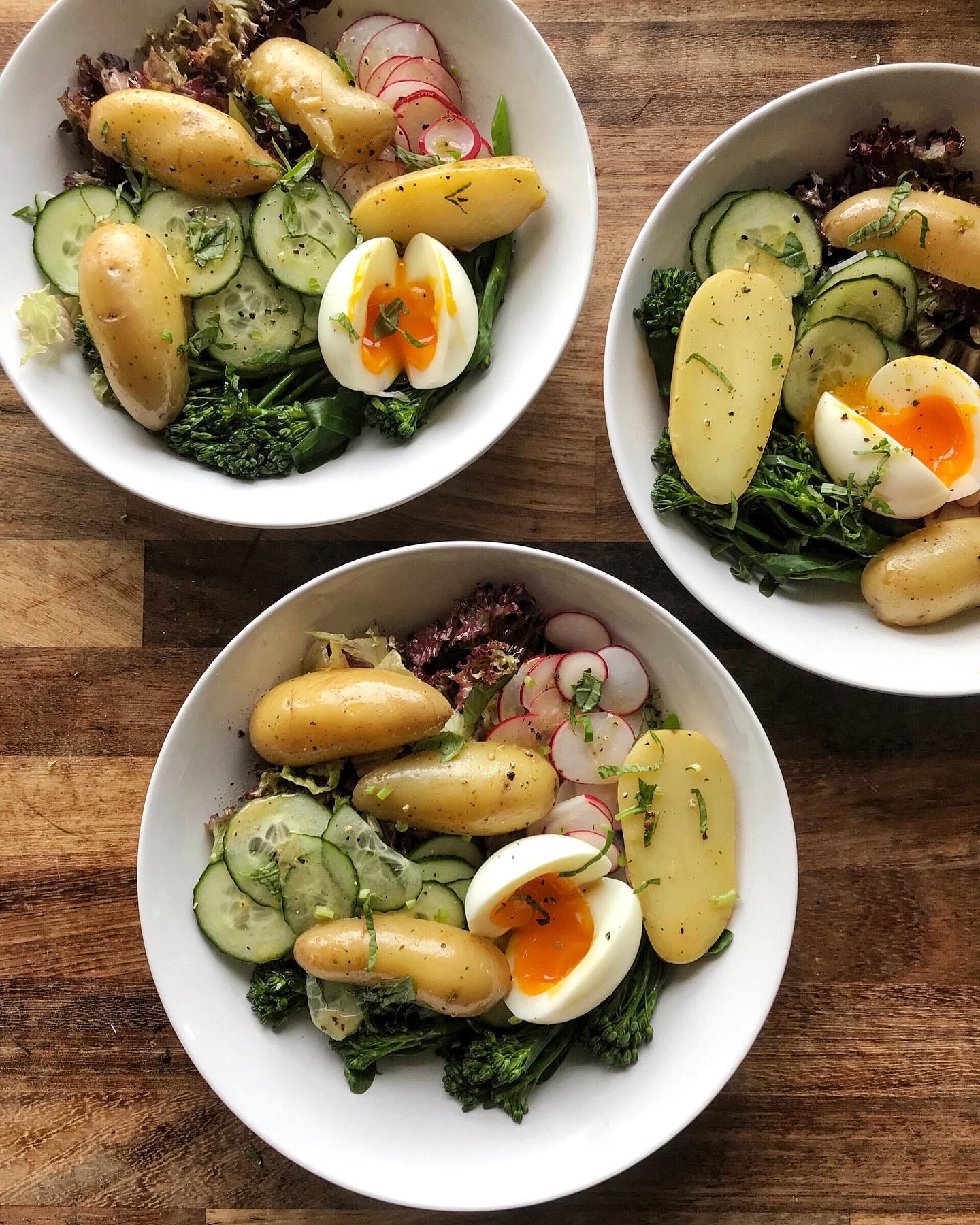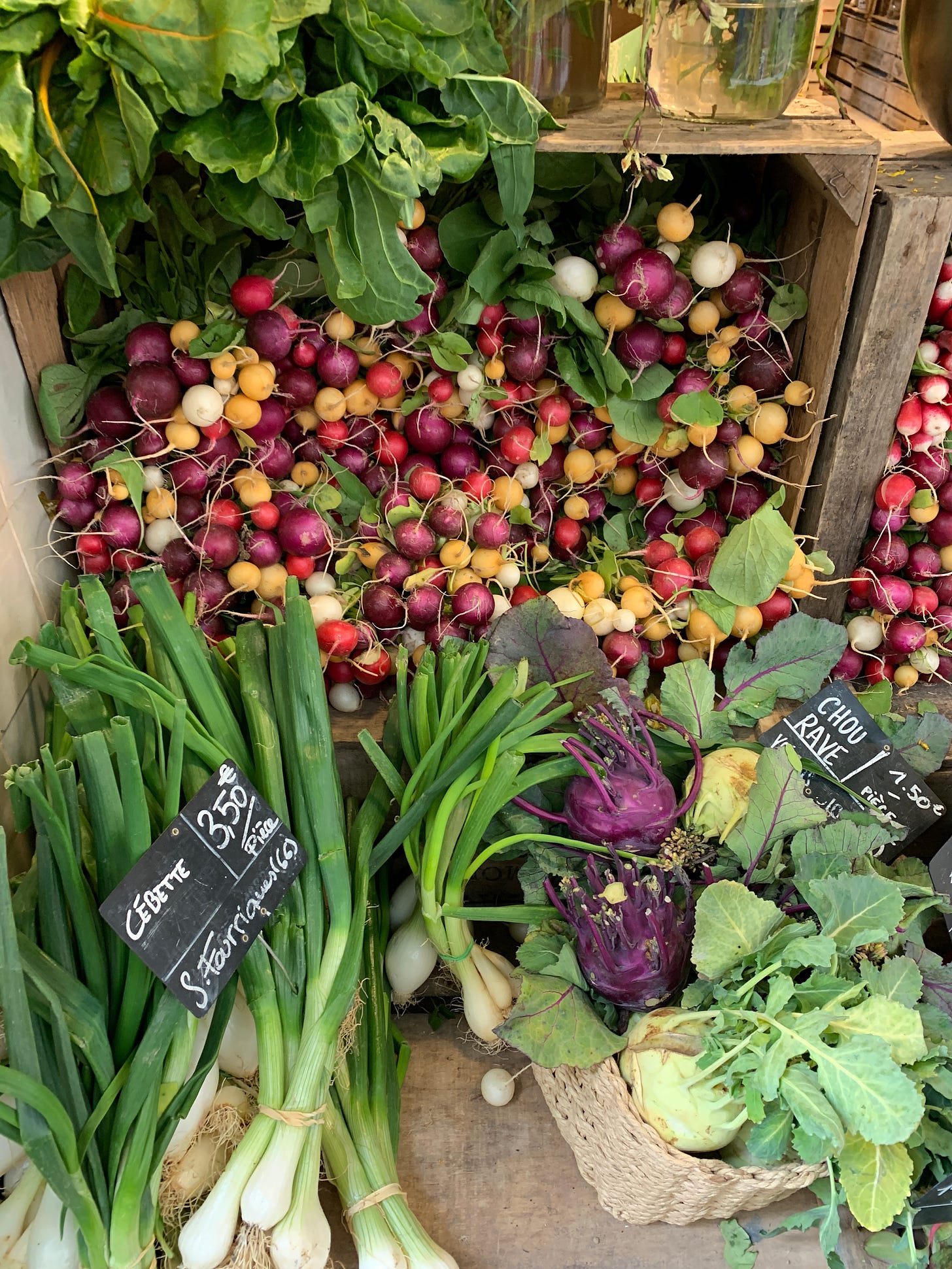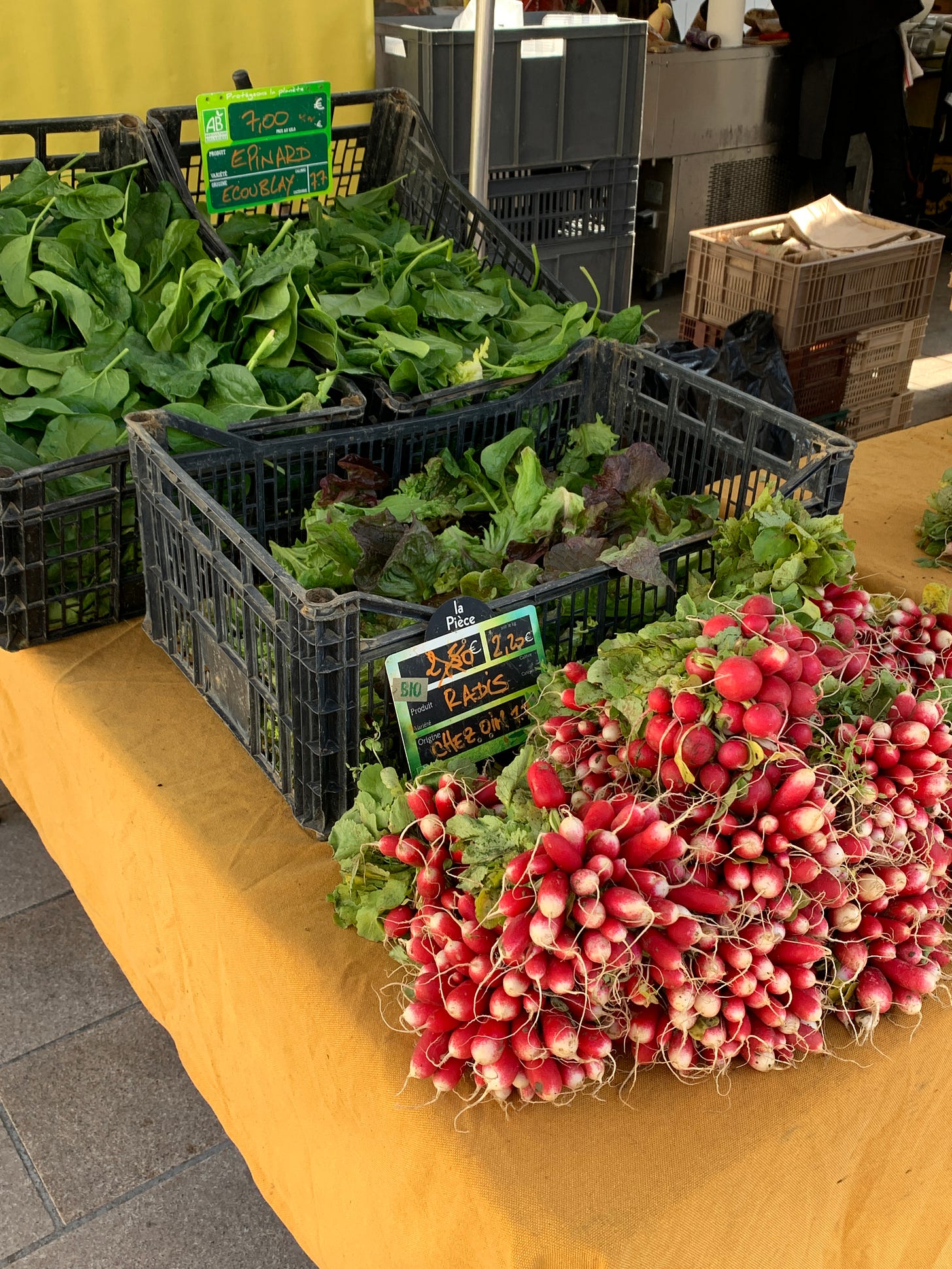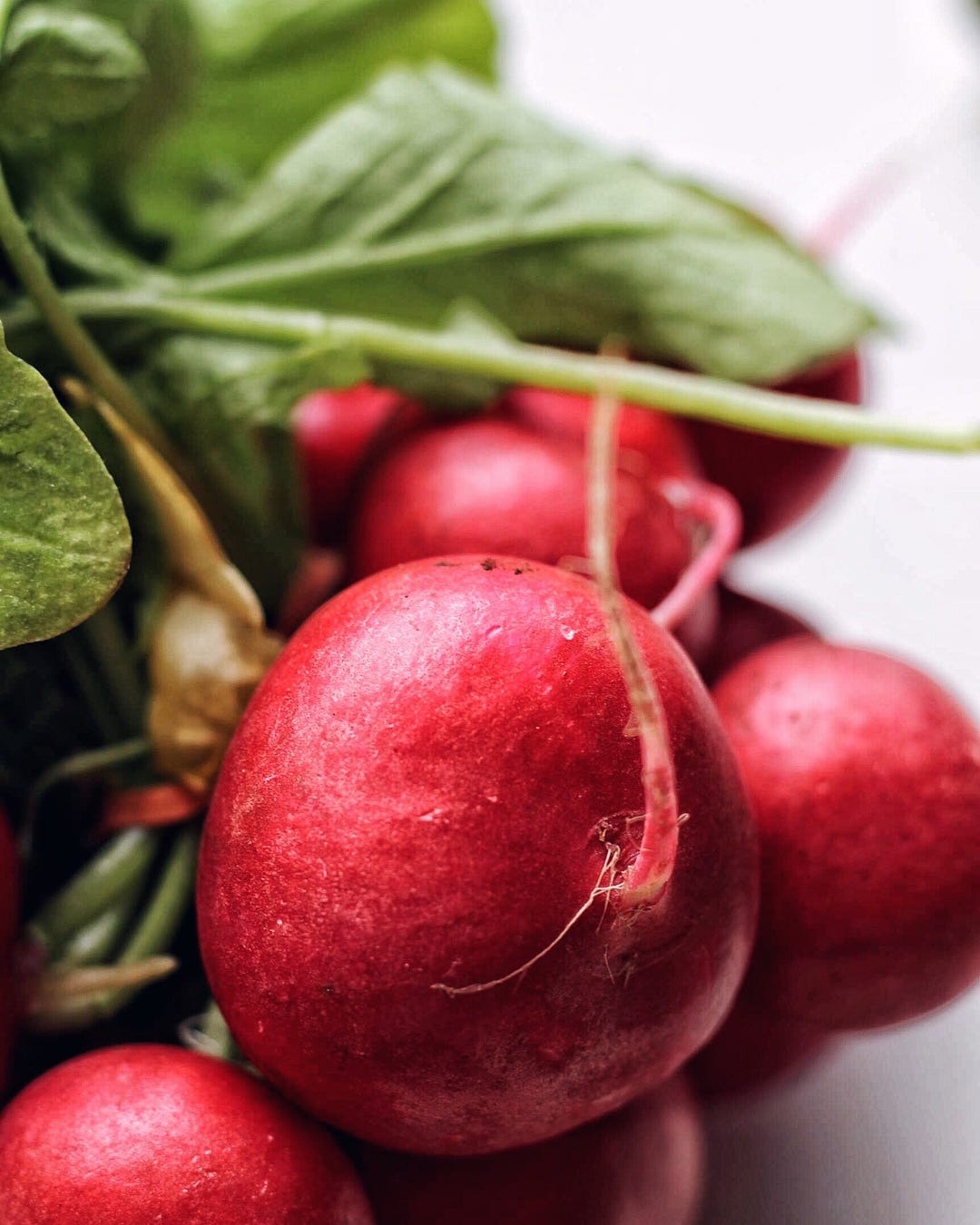Allô! 👋
Welcome (back) to the seasonal sundays section of the good food at home newsletter, where every week we take a closer peek at produce at its peak — with a short introduction, a recipe, and a (sometimes related) cooking Q&A. If you would like to further support the newsletter and help it grow, feel free to hit the like button, leave a comment, refer a friend, or share the newsletter via the button below!
Happy Sunday! I hope your weekend has been off to a great start. This week, we’re digging into the rousing world of radishes — those sometimes round, occasionally ruby, and always ravishing cousins of cruciferous mustards and brassicas like broccoli, cabbage, kale, and (you guessed it) horseradish.
Ready to harvest just a few weeks after sowing, salad radishes are, for many of us, a herald of early spring dining. Freshly plucked, they are delightful simply scrubbed, rinsed, and dipped in salted butter. Add a fresh baguette to the mix, and you’ve got yourself a refreshing taste of seasonal heaven.
RADISHES IN ALL FORMS
As you perhaps already know, radishes come in all sorts of varieties, colours, shapes, and sizes. While the smaller, one-tone (yellow, purple, pink, and white) so-called “salad varieties” are most common in spring, heftier, often two-tone (pink and green, white and green, purple and white, plain cream, or all black) types tend to be more prominent in summer, fall, and winter. Big and small, squat and tall, you must eventually try them all to see which you like best.
Because spring radishes grow very quickly* (and hence are available so early in the season), they generally do not last a very long time. Luckily, you can make the most of the plant at nearly every phase of growth: the sprouts make for lovely microgreens and, after the root bulb has grown past its palatable stage, the plant’s beautiful seed pods and delicate flowers can be eaten too.
*for more on growing radishes + a gorgeous radish recipe, do check out
’s recent post on the topicFLAVOUR NOTES
Another point of variation is taste. Radishes are known for their peppery bite, and their potency can range from pleasingly punchy to downright pungent. If radishes are new to your regular rotation, do proceed with prudence (that is to say, maybe don’t bite into a raw Korean radish unless you know exactly what you’re doing).
Indeed, the whole of a radish is, in fact, edible, so if you do get radishes with lovely green leaves on them, try to make good use of those leafy tops by popping them into a salad, stir-frying them through some noodles, or adding them to your next soup or omelette. When enjoyed fresh, one often finds the tops to be as delightfully crisp, refreshing, and peppery as the radish bulbs themselves.
SHOPPING TIPS
When shopping for radishes, look for ones that still have their leaves on if you can — their appearance will be the best indication of the radishes’ freshness (the fresher the leaf, the fresher the bulb).
Otherwise, the next thing to look for is a plump root with smooth skin, firm flesh, and vibrant colour. Dry, tough, and woody radishes are most likely too old, and will almost always be too spicy to handle, while anything overly spongy, soft, or wrinkly probably hasn’t been stored well and might not be safe to eat.
STORAGE
When it comes to storage, you will want to separate the radish bulb from its leaves (and perhaps also its thin root tail), regardless of whether you plan on eating or composting them, as the leaves will continue to pull nutrients from the bulb even post-harvest†.
Once harvested/cut, the leaves generally won’t last much longer than three days stored in the same way as you would fresh tender herbs, but the radish bulb itself can easily stay quite crisp and peppy in an airtight container for up to two weeks in the refrigerator.
†this is true of any root vegetable — so do remember to always separate the leaves from the root before storing!
five ways with radishes
I grew up in the French school system, where lunches are an attempt at teaching children how meals should be eaten, i.e. in multiple courses, with proper cutlery and tableware, and with no snack-like elements in sight — oh, and only water to drink.
While I do believe there are many merits to this strategy, my school’s particular meals frequently featured an astounding array of under-seasoned, overcooked, and ill-prepared menu options.
Among these were (bizarrely undressed) salads which, quite often, would include large chunks of raw radish. I don’t know about you, but it seemed then (and still seems to me now) a tad bit presumptuous to assume that the average child would be happy and willing to plop a big chunk of raw, slightly dried out, sometimes sandy, radish right onto their tongue, without any reservation‡.
It took me years before I could trust a radish again, but these days I find myself actually looking forward to popping them on a plate. Having gone from radish revolter to radish reformer, I hope I can offer you some inspiration for how to include these seasonal delights on your own menu — no reservations required.
‡: don’t get me wrong, repeated exposure is most certainly the way to learn to like new foods, it’s just that proper preparation is also key
Here are five of my go-to no-recipe recipes for simple and delicious radishes, arranged from least daunting (to me) in flavour to most:
Keep reading with a 7-day free trial
Subscribe to good food at home to keep reading this post and get 7 days of free access to the full post archives.


